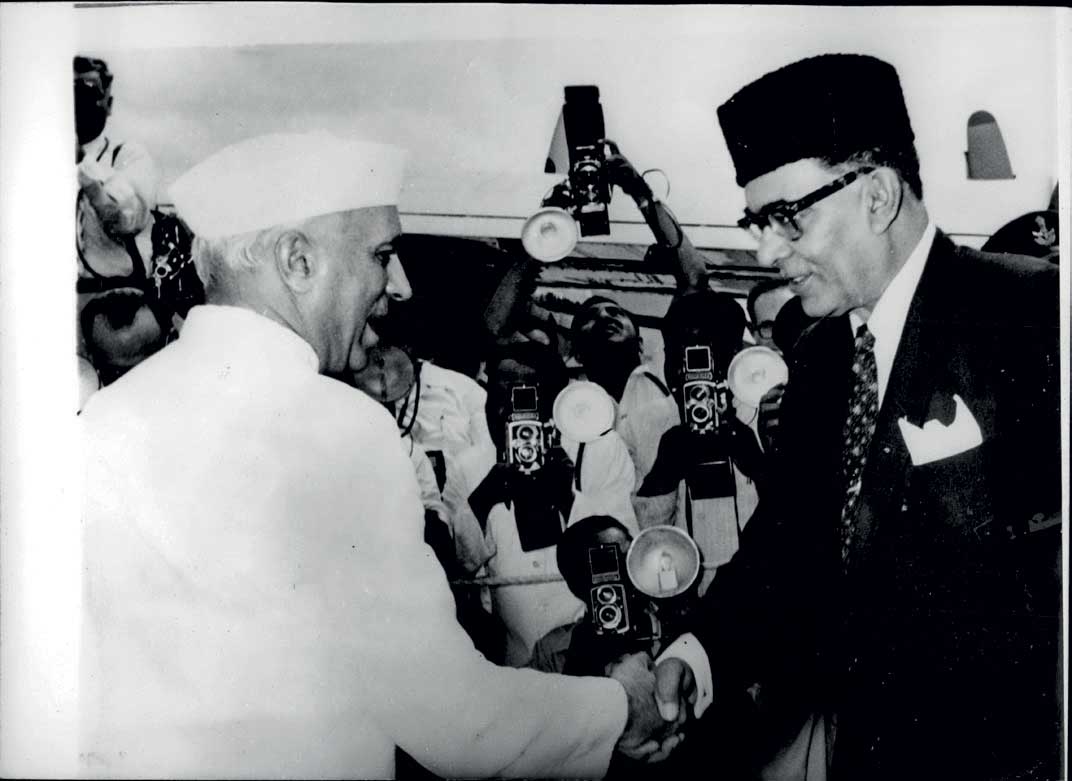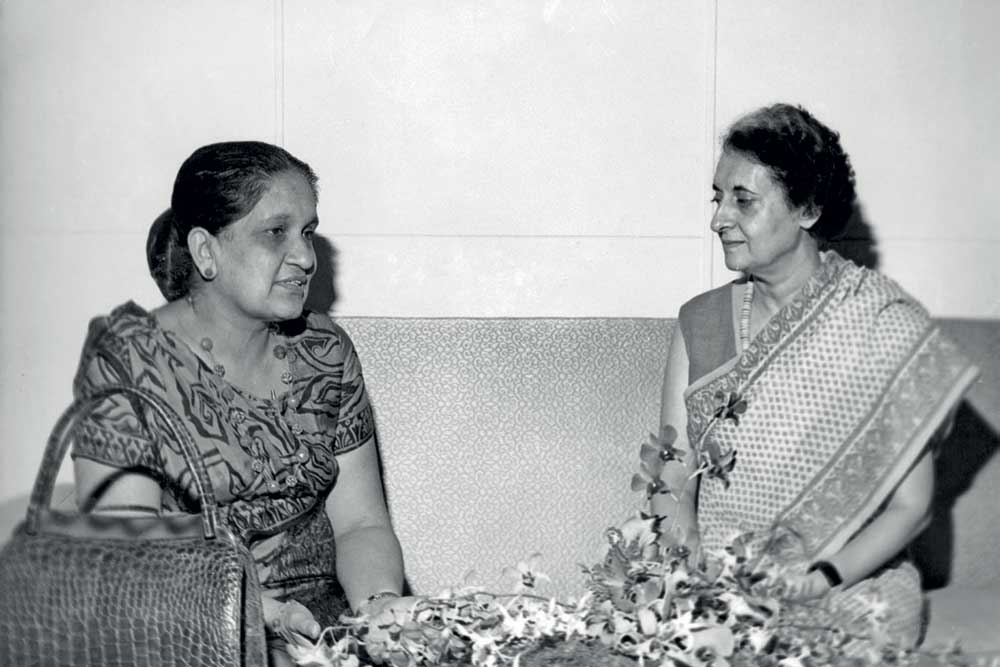The Key to Katchatheevu
The way out of the dispute is the separation of fishing rights and questions of sovereignty
 TCA Raghavan
TCA Raghavan
 TCA Raghavan
TCA Raghavan
 |
05 Apr, 2024
|
05 Apr, 2024
/wp-content/uploads/2024/04/Katchatheevu1.jpg)
Indian and Sri Lankan fishermen celebrate the annual feast of St Anthony on Katchatheevu (Photo: Reuters)
THE POLITICS AND diplomacy underwriting tiny Katchatheevu are again under intense scrutiny. Rather than focus on this issue, a broader view would reveal another important dimension—neighbourhood relations. It is well known that the key to understanding the Katchatheevu controversy is not in the Palk Strait where the islet is located but in a Supreme Court judgment with regard to another part of the subcontinent—Bengal. Here, in the first decade after Partition and Independence, well-meaning efforts on both sides to rationalise the East Pakistan-West Bengal border came up, also, against the strange problem of Berubari village. Comprising some eight square miles or 22 sq km, the 1947 Radcliffe Award placed it in West Bengal. The map attached to the Award, however, showed the village within East Pakistan. In 1958, Prime Minister Jawaharlal Nehru signed an agreement with his Pakistan counterpart, Prime Minister Feroze Khan Noon, premised on a spirit of pragmatism and give-and-take aimed at resolving the issue of numerous tiny enclaves in each other’s territory, along with the Berubari issue which too created daily friction. Based on the belief that good and neat borders make for better neighbourhood relationships, the Nehru-Noon Agreement provided for the division of Berubari into two equal halves, one for East Pakistan and the other for India.
Yet, surgery of this kind, even if it was a micro issue and the approach eminently rational, was easier said (and signed) than done. A Berubari Defence League was soon in existence and opinion in West Bengal consolidated against the division of the village, with resentment mounting against the Central government and any ceding of territory to Pakistan. The West Bengal Legislative Assembly soon declared the whole of Berubari as part of India. YD Gundevia, a senior official in the Ministry of External Affairs at the time, recalled that so enflamed was opinion in West Bengal over the part cession of Berubari that “[s]hoes were exchanged in the floor of the West Bengal assembly for the first time”.
The matter was soon in the Supreme Court which ruled that any cession of territory by the Government of India was only possible with a constitutional amendment. Thereafter, the Ninth Amendment to the Constitution followed in 1960, authorising the government to affect the transfer in terms of the Nehru-Noon Agreement. The moment and the original traction had, however, been lost and local resistance delayed things further. Bilateral relations between India and Pakistan were also soon on a downswing on account of other reasons. It was only in 1974, with the India-Bangladesh Land Boundary Agreement, that the Berubari issue was laid to rest. The problem of the other enclaves however persisted for almost another half-century. It was as recently as 2015 that the India-Bangladesh Land Boundary Agreement was concluded which settled the festering issue of enclaves in both countries. But the agreement had to be preceded by the 100th Amendment to the Constitution empowering the government to transfer the Indian enclaves in Bangladesh-to-Bangladesh sovereignty and simultaneously acquire sovereignty over the Bangladeshi enclaves in India. The spirit that underwrote the agreement was one of broad pragmatism—that the issue could only be settled if an overall strategic approach was adopted without counting how many acres India lost or gained in the process.
At the heart of the matter is the residual, but still powerful, outrage among some that the islet was unilaterally ceded to Sri Lanka. Issues arising from cartographic delineation are rarely without grievances
The legal basis to the Katchatheevu resentment, however, is this Berubari precedent based on the 1960 Supreme Court judgment and the subsequent constitutional amendments. How was the island ceded without a constitutional amendment? In 2008, a lawsuit was filed in the Supreme Court challenging the ceding of Katchatheevu on precisely this ground. The counter-argument is that no actual cession of Indian territory was involved, since Katchatheevu had been a case of disputed sovereignty at most. It is only if and when this suit is heard that the legal issue will be resolved.
But in the context of India-Sri Lanka relations Katchatheevu is a settled matter following the 1974 and 1976 India-Sri Lanka agreements. International law rests on the premise of state sovereignty and the doctrine of estoppel, which bars a state from going back on previous legal commitments to the detriment of another state.
The polemical dust that tiny Katchatheevu periodically raises has a predictable logic to it—the compulsions of electoral politics. The concession or acknowledgement in 1974 that it lay on the Sri Lankan side of the maritime boundary presses several buttons more or less simultaneously. These include Centre-state relations; Tamil pride, including the sense that Tamil Nadu’s interests were subordinated to a narrative of good relations with Sri Lanka; and the plight of its fishing communities around the coast in Rameswaram. The current controversy oscillates predictably within this framework as the Bharatiya Janata Party (BJP) tries to take electoral advantage of the resentment that still persists over the 1974 decision on Katchatheevu’s status. The Dravida Munnetra Kazhagam (DMK) and Congress refute the charge that they sold Tamil Nadu’s interests while in charge of the state and Union governments respectively in 1974.
At the heart of the matter is the residual, but still powerful, outrage among some that the islet was unilaterally ceded to Sri Lanka. Issues arising from cartographic delineation, whether on the land borders or in the maritime realm, are hardly ever without such corresponding grievances on both sides. In that context, a widening of the frame would reveal that the current controversy has added the India-Sri Lanka maritime boundary to the existing portfolio of territorial and border-related issues impacting India.
The most evident is obviously the dispute concerning Jammu & Kashmir with Pakistan, and all the attendant problems arising from the Line of Control (LoC) across the erstwhile state, now a Union territory. In recent years, territorial and boundary issues and disputes with China have dwarfed even the traditional adversarial mould with Pakistan. A face-off in Ladakh and renewed Chinese assertions regarding Arunachal Pradesh underline just how much borders and territorial disputes weigh on diplomacy and foreign policy.
Further to the Northeast new issues have arisen with regard to the India-Myanmar border. The civic and communal conflict in Manipur led to the decision on fencing the border with Myanmar and ending the free movement regime that enabled tribes divided by modern sovereignties to maintain traditional contacts across international borders. This is, in effect, making the India- Myanmar border approximate more and more to the Radcliffe Line on the west—the India-Pakistan border—and to an extent on the east—the India-Bangladesh border. In recent months, the writ of the Myanmar state has not just retreated but practically disappeared from the region abutting India, implying that the India-Myanmar border will be facing new challenges. To this, the burden of fencing and ending free movement across the border will add further complexities and unknowns. Cartographic realities are obviously important and have to be shored up. But understanding that there are ties and bonds that cut across cartographies means that simply securitising borders will be a costly and ultimately unsustainable solution in a region that was in the past deeply insurgency-prone.
IN BRIEF, FROM the tip of our western coast on the Arabian Sea to the beginnings of the eastern coast on the Bay of Bengal, virtually our entire continental border faces stress. Even with Nepal, a long-festering issue of Kalapani on the India- Nepal-China tri-junction erupted after 2019 and now has the potential to become a destabilising factor.

In contrast, the overall maritime boundary situation is better since our maritime boundaries with all neighbours, barring Pakistan, have been settled. With Bangladesh, this was not a straightforward process and the final resolution followed an award by the Permanent Court of Arbitration at The Hague.
Like many other South Asian disputes, the origins of the disagreement over the maritime boundary between East Pakistan and India go back to the 1947 Partition. By the 1970s, claims and counter-claims had acquired a new intensity, in part because a new feature appeared off the coast and both countries claimed it. New Moore Island was the name given to it by India. The island emerged after Cyclone Bhola in November 1970. Its role in the geopolitics of South Asia is much less than the impact the cyclone had on a united Pakistan. Nevertheless, for a time the claims to the island animated the India-Bangladesh maritime boundary dispute which also gathered traction alongside reports of gas and oil reserves in this part of the Bay of Bengal.
In 1958, prime minister Jawaharlal Nehru signed an agreement with Pakistan’s Feroze Khan Noon, premised on a spirit of give-and-take aimed at resolving the issue of numerous tiny enclaves in each other’s territory
Bangladesh finally went to the Permanent Court of Arbitration in 2009. For India, accepting an external adjudication or arbitration has always been problematic, but the decision at the time was to go along with the arbitration process. The final award came in July 2014. What surprised many at the time was that India accepted the award despite the popular impression that it was tilted in favour of Bangladesh in its territorial implications. This happened despite the fact that there had been a change in government in India in May 2014. Clearly, the view that the bigger picture of India-Bangladesh relations was more important had prevailed than the simple numbers game of the extent to which your claim was recognised or of the territory lost or gained. Almost metaphorically, New Moore Island had also disappeared by 2010—reclaimed by the sea that had created it. Incidentally, 2014-15 must stand out as an exceptional year in terms of placing India-Bangladesh relations on a firm foundation with the conclusion of the maritime and land boundary agreements. Both these agreements were based on years of patient diplomacy and detailed cartographic work and the final agreements were concluded despite the change of government in India in 2014.
The India-Sri Lanka maritime demarcation had been completed much earlier in 1974 and 1976, and signed and sealed through bilateral treaties. Yet this was a settlement only up to a point: it left the Katchatheevu issue as a festering sore alongside the sentiment that Tamil Nadu’s interests had been sacrificed on the anvil of better India-Sri Lanka relations. The core of the issue is fishing rights: the sovereign status of the island as Sri Lankan meant that fishing communities on the Indian side were left aggrieved.
If in formal and legal terms maritime boundaries in the Bay of Bengal are delineated, they are not so in the Arabian Sea. The India-Pakistan maritime boundary, not delineated, reflects the overall suboptimal nature of their relations. The specific hurdle has been the issue of where the boundary should lie vis-à-vis Sir Creek. The adversarial nature of the relationship has meant that delineation of the kind achieved with Bangladesh, or even with Sri Lanka, with the strategic big-picture approach prevailing, is just not possible in this case.

The immediate implication of this non-delineation is felt by fishing communities on both sides. Every year hundreds, sometimes thousands, of fishermen, are picked up by the respective coast guards and imprisoned for prolonged periods. In general, the numbers of Indians arrested are far in excess of Pakistani fishermen, the reason being that the catch is better on the Pakistani side. The absence of a clear maritime demarcation makes it more likely that fisherman of either country will be caught transgressing into each other’s waters. But even a clear demarcation will not put a halt to such transgressions—in the end, fishermen follow the fish.
In the context of India-Sri Lanka relations Katchatheevu is a settled matter following the 1974 and 1976 India-Sri Lanka agreements. International law rests on the premise of state sovereignty and the doctrine of estoppel
A rational, scientific solution will therefore need two broad parameters. First, a clear demarcation of the maritime boundary so that territorial rights can be effectively policed; and second, risk factors—narcotics, terrorists, etc—reduced to the extent possible. Sovereignty delineation and assertion will not, however, resolve fishing issues. For that, some greater quotient of science and scientific management is required in terms of fishing quotas, licences, and joint management systems. That’s how other countries have resolved such issues. In the India-Pakistan context, with its multiple layers of strategic distrust and mutual suspicion, this approach is still futuristic but it remains the only way forward. Similarly, for Katchatheevu, the sovereignty issue is long settled but the residual fishing rights question still awaits a sustainable resolution.
LEGALITIES AND DOMESTIC political factors apart, there are two central aspects to the Katchatheevu matter. The first is the issue of harmonising fishing rights between different countries. The way forward has to be one of separating or disaggregating fishing issues from sovereignty issues. It has long been recognised that addressing the demands of Tamil Nadu’s coastal fishing communities would be the best way to diffuse the emotive sovereignty claims and counter-claims and attendant prejudices. The way forward has therefore to be one of modern fishing techniques, permits, licences and quotas. Such a regimen, once developed, could also become a template for other parts of South Asia, in particular for fisherman along the India- Pakistan maritime boundary.
The second and more important question is about India and its neighbours in South Asia. It is perhaps too early to evaluate the impact the recent Katchatheevu controversy will have on Sri Lanka, given existing polarisations and fragilities in that country. Yet, in a broader sense, and notwithstanding the huge priority placed on ‘neighbourhood first’ as policy, the idea of regional cooperation in South Asia is noticeably weaker than it was a decade earlier. The year 2014-15—with the India-Bangladesh agreements, the 2014 South Asian Association for Regional Cooperation (SAARC) summit in Kathmandu, the presence of SAARC leaders at the inauguration of a new government in India—was in many ways a high point. Since then, India-Pakistan differences have led to a deep crisis for SAARC. BIMSTEC—the Bay of Bengal Initiative for Multi-Sectoral Technical and Economic Cooperation—may well be heading for a severely challenging phase in its history given internal developments in Myanmar since the military coup in 2021. This general weakening of the cooperative impulse in South Asia takes place amidst a rapidly expanding Chinese influence in our neighbourhood. How we approach relations with our neighbours is thus much more than a bilateral issue. Squaring that with our equally complicated domestic politics is something to be addressed centrally.
About The Author
MOst Popular
3

/wp-content/uploads/2025/07/Cover-Shubman-Gill-1.jpg)












More Columns
Nimisha Priya’s Fate Hangs In Balance, As Govt Admits It Can’t Do Much Open
Roots of the Raga Abhilasha Ojha
An Erotic Novel Spotlights Perimenopause Nandini Nair